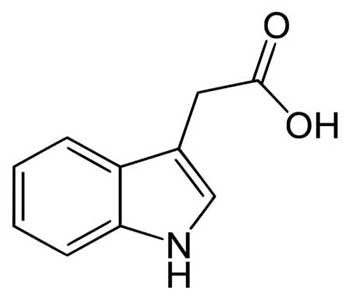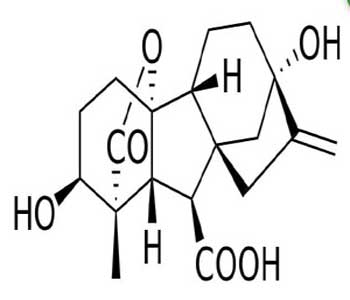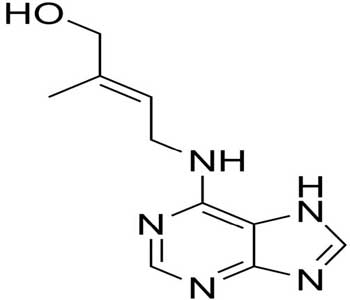The following table shows the comparison among Auxin, Gibberellin and Cytokinin:
|
Auxin |
Gibberellin | Cytokinin |
|---|---|---|
|
It is an organic acid: Indole radicle-Auxin a(auxenotriolic acid): C18H32O5, auxin b(auxenolonic acid): C18H30O4 and hetero auxin(indole acetic acid): C10H9O2N. |
It is also organic acid-5-ringed diterpenoids. Its chemical formula is C19H22O6 (GA3). |
It is also an organic alkali: 6-furfuryl amino purine similar to adenine. Its chemical formula is C10H9N5O. |
| It acts as both nitrogen free and nitrogenous compound. Here nitrogen free compounds are auxin a and auxin b while hetero auxin is nitrogenous compound. |
It is nitrogen free compounds. |
It is nitrogenous compound. |
|
It is produced in apical meristem of growing region of plants. |
It is originated from germinating plants and cotyledons. |
It is originated from endosperm and meristem. |
|
Auxin is transported basipetally, i.e., polar transport. |
It is transported in all directions. |
It is transported in all direction or may be active at the site of synthesis. |
|
Auxin plays an active role in cell division. |
It does not perform in cell division. |
It helps to encourage cell division. |
|
It initiates adventitious root production at the cut ends of branches. |
It controls adventitious root production at the cut ends of branches. |
It initiates adventitious root production at the cut ends of branches. |
|
It stops premature leaf fall. |
Gibberellin does take part to stop premature leaf fall. |
It does take part to stop premature leaf fall. |
| It controls tropic movements such as phototropism and geotropism. |
It does not control tropic movement. |
It does not take part in tropic movement. |
|
It also plays an important role in apical dominance. |
It does not take part in apical dominance. |
Apical dominance can be concentrated. |
|
It helps to produce seedless fruits. |
It helps to removes the dormancy of seed. |
It stimulates the germination of seeds. |

Auxin

Gibberellin

Corn Cytokinin(Zeatin)

